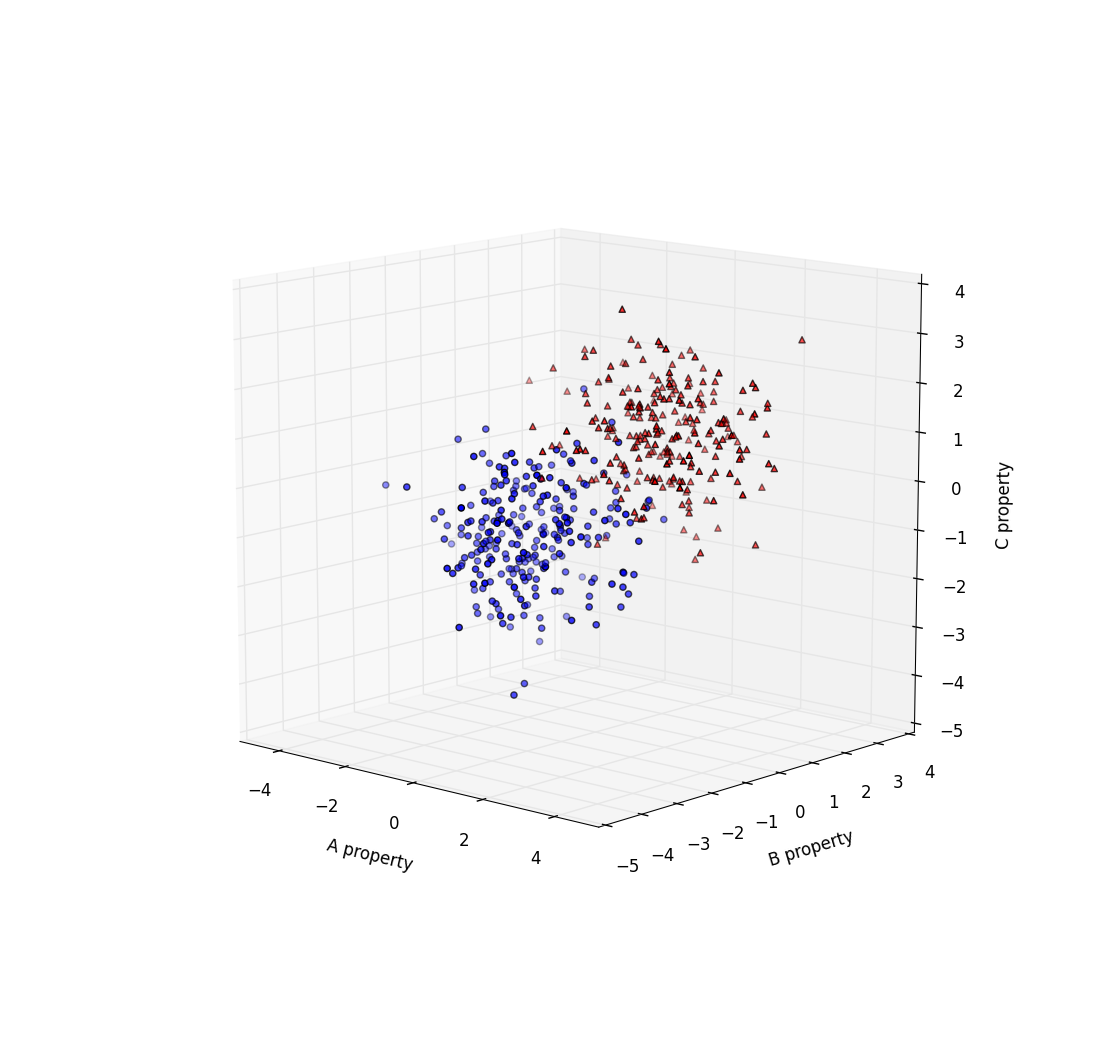THIS IS A WORK IN PROGRESS …
A Mathematical Approach Towards Gender
Short (;tldr)
This is about the idea to capture our apparent perception of gender in more
mathematical definitions.
The idea is that gender does not exist if you only look at one individual,
but comes into existence if you consider a statistically relevant group.
We want to look at gender as a multidimensional space where each aspect
of gender is a dimension which covers a range from $-1$ to $1$.
Please Note
I will not write about male and female, we will only consider the genders “$-1$” and “$1$”. You can map them to male and female as you like, but it just should not matter.
Also this is about describing how people percept gender not about assigning gender nor about limiting peoples self attribution.
The Space
A basic insight is that there are not just two genders which a mutually exclusive but there seams to be a spectrum. If you think of gender and want to define it by phenomenons you will notice that there are many aspects which could be rated from $-1$ to $1$. This aspects consider different physical properties (like voice, penis, uterus, breasts circumference, relation of pelvis to shoulders, …) but you may also consider psychological aspects you may link to a specific gender.
We will not make a difference here between the different aspects and their nature, we are mainly considered with how this aspects (co)relate to each other, and how to find out if a specific aspect is related to gender.
First we consider the aspects of being individual and unrelated to each other. So our gender space is a multidimensional space where we could do normal vector operations (euclidean space).
Our everyday knowledge tells us that most people consider them self belonging to one of two gender groups.
We may look at individuals by there gender aspects (we should always be aware that this is a model, aka. reduction-of-complexity, which can not represent reality) as multidimensional vector:
Individual “v”:
$ I_v = ( a_1, a_2, a_3, …, a_n ) $
for a model considering $n$ aspects.

Artificial model
As a simple model for individuals one could assume the following:
$ a_n = b + r_n $
where $b$ is a random variable drawn form ${-1, 1}$ and fixed for an individual, while $r_n$ is a diversity parameter. The plot above uses a standard deviation function for generating $r_n$
The parameter $b$ determines the “base gender” which has influence about the statistical distribution, but does not limit the range.
Composition of society (or gender distribution therein) is determined by the functions which generate $b$ and $r_n$.
Clusters
So based on our everyday knowledge we may assume that there are two large clusters and most people would fall into one of those two clusters.
Exactly defining this cluster is difficult and will largely depend on the number of individuals considered belonging to the cluster.
It could be expected that both clusters have centers and one is at $(1, 1, …, 1)$ while the other is at $(-1, -1, …, -1)$. But this would be an idealized model and probably won’t match reality.
Constructing Gender
The problem with defining gender is that no single property can be used on its own in a way that it would at least the majority of peoples perception.
But a lot of people can be clearly assigned to one specific gender according to their ability to reproduce and the part they take therein. But this does not apply to everyone. And many people could be clearly assigned a gender even in the absence of reproduction ability.
Since we can measure a lot of different properties, we could make a condensed list of properties which correlate with the gender of people where we can clearly attribute a specific gender to. We can then use the correlations to identify a gender for a person even in the absence of reproduction ability.
It is important to understand that this gender construction works only in the context of a larger group. So this kind of gender should be noted as “relative” gender.
Modeling Human Perception
Our gender construction from above may be used to model the individuals perception of gender. This assumes that a internal learning process is utilized, and most likely the learning process would be fed by already learned and accepted gender assignments and resulting property attribution.